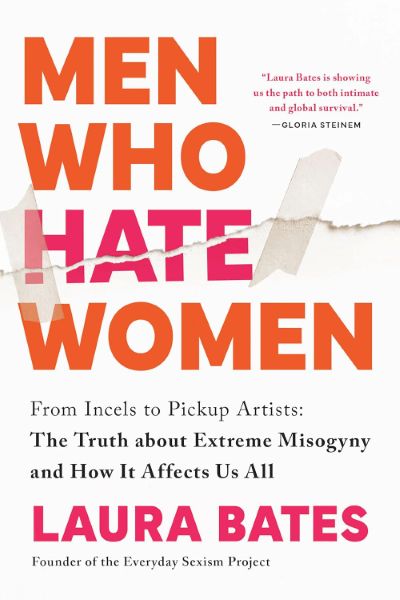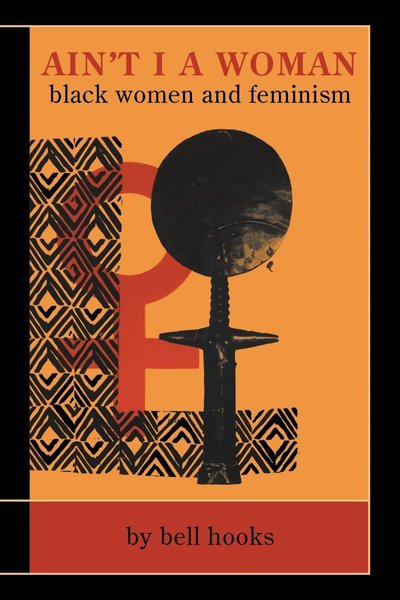Men Who Hate Women: From Incels to Pickup Artists: The Truth about Extreme Misogyny and How it Affects Us All
A groundbreaking investigation into the online world of extreme misogyny, exposing how incel communities, pickup artists, and the broader 'manosphere' radicalize men against women. Bates reveals the dangerous real-world consequences of digital hatred and its impact on society as a whole.

📝 Book Review
“Men Who Hate Women: From Incels to Pickup Artists: The Truth about Extreme Misogyny and How it Affects Us All” stands as Laura Bates’s most ambitious and disturbing work to date, providing an unprecedented investigation into the dark corners of online misogyny and its devastating real-world consequences. This New York Times bestselling exposé offers a comprehensive analysis of what Bates terms the “manosphere”—a vast network of interconnected online communities united by their hatred of women and their commitment to undermining gender equality.
Laura Bates, founder of the Everyday Sexism Project and one of Britain’s most prominent feminist activists, brings both journalistic rigor and personal courage to this investigation. Her background documenting everyday experiences of sexism through her groundbreaking crowdsourced project positioned her uniquely to understand how online misogyny connects to broader patterns of gender-based discrimination and violence. Bates’s approach combines meticulous research with accessible writing, making complex and often disturbing material comprehensible to general audiences while maintaining the analytical depth necessary for understanding these phenomena.
The book represents the culmination of years of undercover research, during which Bates immersed herself in online communities dedicated to extreme misogyny. Her methodology involved careful documentation of posts, private messages, and community dynamics while taking significant personal risks to gather firsthand evidence. This approach provides readers with an insider’s view of these communities that would otherwise remain invisible to mainstream society.
The Architecture of Online Misogyny
Bates begins by mapping the complex ecosystem of online misogyny, revealing how seemingly separate communities actually form an interconnected network that she calls the “manosphere.” This network includes pickup artist (PUA) communities, Men’s Rights Activists (MRAs), Men Going Their Own Way (MGTOW), and the involuntary celibate (incel) movement, among others. While each community has its specific focus and culture, they share fundamental beliefs about male superiority and female inferiority.
The analysis reveals how these communities function as a pipeline, with individuals often moving between different groups and adopting increasingly extreme ideologies over time. A young man might begin by consuming pickup artist content, become frustrated with its promises, and gradually migrate toward more extreme communities that offer simpler explanations for his difficulties—always centered on blaming women rather than examining personal or societal factors.
Bates demonstrates how the manosphere operates through sophisticated recruitment and radicalization techniques that mirror those used by other extremist movements. Communities use humor, memes, and seemingly rational arguments to draw in vulnerable individuals, gradually introducing more extreme ideas once members are emotionally invested in the community. This process of radicalization often occurs gradually, making it difficult for individuals to recognize how their thinking has changed.
The book reveals the global nature of these communities, showing how online platforms enable the spread of misogynistic ideologies across national boundaries. Members from different countries share tactics, reinforce each other’s beliefs, and coordinate activities, creating an international movement dedicated to opposing women’s rights and equality.
The Incel Phenomenon
One of the book’s most important contributions is its detailed examination of the involuntary celibate (incel) community, which has gained notoriety for its connection to multiple acts of terrorism and mass violence. Bates provides careful analysis of incel ideology, revealing how the community has evolved from a support group for lonely individuals into a hate movement that promotes violence against women.
The analysis traces the historical development of incel communities, showing how they have become increasingly extreme and violent over time. Early iterations focused on mutual support and dating advice, but the communities gradually adopted ideologies that blame women for men’s sexual and social failures while promoting increasingly violent solutions to these perceived injustices.
Bates reveals the sophisticated ideological framework that incel communities have developed, including elaborate hierarchies based on physical appearance, detailed theories about female sexuality and behavior, and complex justifications for violence against women. This framework provides adherents with a complete worldview that explains their personal difficulties while absolving them of responsibility for change or self-improvement.
The book documents the connection between incel ideology and real-world violence, examining multiple cases where individuals radicalized in online communities have committed acts of terrorism specifically targeting women. These incidents reveal how online hatred can translate into deadly real-world consequences, making the study of these communities a matter of public safety rather than simply academic interest.
Pickup Artist Culture and Commercial Misogyny
Bates provides extensive analysis of the pickup artist industry, revealing how commercial enterprises profit from teaching men manipulative and often abusive techniques for sexual conquest. The pickup artist world represents a particularly insidious form of misogyny because it packages hatred of women as self-improvement and success training for men.
The investigation reveals how pickup artist “gurus” profit from male insecurity and frustration, offering expensive courses, books, and coaching services that promise sexual success through psychological manipulation and emotional abuse. These teachings often escalate from relatively mild manipulation tactics to techniques that border on or explicitly promote sexual assault.
Bates documents how pickup artist communities normalize sexual aggression and teach men to view women as objects to be conquered rather than human beings deserving respect. The emphasis on “pickup” rather than genuine relationship-building reflects deeper assumptions about male entitlement to female sexual availability and the irrelevance of women’s desires or consent.
The analysis extends to examine how pickup artist ideology influences broader cultural attitudes toward sexuality and relationships. The commercialization of these approaches has brought misogynistic ideas about gender relations into mainstream culture, affecting how young men understand masculinity and how they approach relationships with women.
Men’s Rights Activism and Institutional Infiltration
The book provides crucial analysis of the Men’s Rights Activist (MRA) movement, which presents itself as advocating for men’s legitimate concerns while actually working to undermine women’s rights and roll back feminist progress. Bates reveals how MRA communities use seemingly reasonable arguments about male disadvantage to justify broader attacks on gender equality.
The investigation shows how MRA ideology operates through selective presentation of statistics and research, highlighting genuine areas where men face challenges while ignoring broader patterns of gender inequality that primarily disadvantage women. This selective approach allows MRAs to present themselves as advocates for equality while actually working to maintain male privilege.
Bates documents how MRA ideas have infiltrated mainstream institutions, including courts, schools, and government agencies. The movement’s success in presenting itself as a legitimate civil rights cause has enabled its adherents to influence policy decisions and institutional practices in ways that harm women and children, particularly in areas like divorce proceedings and domestic violence response.
The analysis reveals the international coordination of MRA activities, showing how activists share strategies and resources across national boundaries while adapting their messages to local cultural and political contexts. This global coordination has enabled the movement to achieve influence far beyond what its actual membership numbers might suggest.
The Role of Technology Platforms
Throughout the book, Bates provides critical analysis of how major technology platforms enable and amplify misogynistic content. She demonstrates how algorithms designed to maximize engagement often promote extreme content, creating “rabbit holes” that can lead users from mainstream content toward increasingly radical communities.
The investigation reveals how platforms like YouTube, Reddit, Twitter, and Facebook have become crucial infrastructure for misogynistic movements, providing spaces for organizing, recruitment, and radicalization. While these platforms have policies prohibiting hate speech, enforcement is often inconsistent and ineffective, allowing harmful communities to flourish.
Bates examines how platform design features can inadvertently promote misogynistic content. Recommendation algorithms, engagement metrics, and community features often reward extreme or controversial content, providing financial and social incentives for creators who produce misogynistic material.
The book also documents how misogynistic communities adapt to platform enforcement efforts, developing coded language, migrating between platforms, and creating backup communication channels to evade moderation. This adaptability reveals the limitations of platform-based solutions to online extremism and the need for more comprehensive approaches.
Real-World Consequences
One of the book’s most important contributions is its documentation of how online misogyny translates into real-world harm. Bates traces direct connections between participation in misogynistic online communities and various forms of gender-based violence, from harassment and stalking to domestic abuse and terrorism.
The analysis reveals how online communities provide both ideological justification and practical training for violence against women. Members share detailed information about surveillance techniques, stalking methods, and strategies for evading law enforcement, essentially functioning as training grounds for gender-based violence.
Bates documents the impact of online misogyny on women’s participation in public life, showing how harassment campaigns can drive women out of careers, force them to relocate, and limit their ability to engage in public discourse. This systematic silencing effect represents a form of political oppression that undermines democratic participation and gender equality.
The book examines how online misogyny affects young people’s understanding of gender relations, with teenagers increasingly exposed to extreme misogynistic content through social media platforms and online communities. This early exposure can shape attitudes toward relationships, consent, and gender equality in ways that may persist throughout their lives.
The Pipeline to Extremism
Bates provides sophisticated analysis of how individuals become radicalized within misogynistic communities, revealing a clear pipeline that moves men from mainstream frustration toward extreme ideologies and, in some cases, violent action. This process typically begins with legitimate personal difficulties or social anxieties that make individuals vulnerable to extremist recruitment.
The investigation shows how communities exploit common male experiences—dating rejection, career difficulties, social isolation—to recruit new members. Rather than addressing the actual causes of these problems or providing constructive solutions, communities channel male frustration toward hatred of women and feminism.
The book documents how radicalization occurs through gradual exposure to increasingly extreme ideas, combined with social pressure from community members and isolation from alternative perspectives. This process can transform seemingly ordinary individuals into committed misogynists willing to engage in harassment, threats, or violence.
Bates reveals how the pipeline operates differently for different types of men, with communities developing specialized recruitment strategies for various demographics. Young men might be recruited through gaming communities or social media, while older men might be drawn in through divorce support groups or career-focused forums.
Intersections with Other Forms of Extremism
The book provides important analysis of how misogynistic extremism intersects with other forms of hate and political extremism. Bates documents extensive connections between misogynistic communities and white supremacist movements, revealing shared ideologies and coordinated activities.
The investigation shows how both movements promote similar ideas about natural hierarchies, the dangers of social change, and the need to preserve traditional power structures. This ideological overlap has enabled significant cooperation between misogynistic and racist extremist groups.
Bates examines how political movements have incorporated misogynistic messaging to broaden their appeal and mobilize supporters. The use of gender-based resentment as a political tool has proven effective for various extremist movements seeking to expand their influence and recruit new members.
The analysis reveals how extremist movements share tactics and strategies, with successful approaches in one domain quickly adopted by others. This cross-pollination has accelerated the development of more sophisticated and effective extremist organizing techniques.
Impact on Public Discourse
The book documents how extreme misogyny has influenced broader public discourse about gender, shifting the boundaries of acceptable conversation in ways that normalize hostility toward women. Concepts and language originated in extremist communities have entered mainstream political and cultural discussions.
Bates shows how the presence of extreme misogynistic voices has made more moderate forms of sexism appear reasonable by comparison. This “Overton window” effect has shifted public debate in directions that ultimately serve to undermine gender equality and women’s rights.
The investigation reveals how misogynistic communities have developed sophisticated media strategies designed to influence public opinion and policy decisions. These efforts include coordinated harassment campaigns against feminist activists, strategic use of social media to amplify their messages, and cultivation of relationships with sympathetic media figures.
The book examines how the normalization of extreme misogyny affects women’s participation in public discourse, with many women reporting that they self-censor or avoid certain topics to protect themselves from harassment and abuse.
Global Dimensions
Bates provides important analysis of how online misogyny operates as a global phenomenon, with communities sharing ideas, tactics, and resources across national boundaries. The book documents how extremist content produced in one country can influence individuals and communities worldwide.
The investigation reveals how different cultural contexts shape the expression of misogynistic ideologies while maintaining core themes and objectives. Communities adapt their messaging to local conditions while maintaining connections to the broader global network.
The book examines how international differences in legal frameworks and platform regulation create opportunities for extremist communities to evade accountability by moving their operations between jurisdictions. This regulatory arbitrage enables continued operation despite local enforcement efforts.
Bates documents how global economic and social changes have contributed to the growth of misogynistic movements, with communities capitalizing on widespread male anxiety about changing gender roles and economic uncertainty.
Responses and Solutions
While primarily focused on documenting and analyzing the problem, Bates concludes with thoughts on potential responses to online misogyny and extremism. She argues that effective solutions require coordinated efforts across multiple domains, including platform regulation, law enforcement, education, and community intervention.
The book advocates for improved platform governance that goes beyond reactive content moderation to address the structural features that enable extremist organizing. This might include changes to recommendation algorithms, community features, and monetization systems that currently reward extreme content.
Bates emphasizes the importance of educational approaches that help young people develop critical thinking skills and resilience against extremist recruitment. Early intervention programs could help identify vulnerable individuals before they become deeply committed to extremist ideologies.
The analysis suggests the need for better coordination between law enforcement agencies, both within and between countries, to address the transnational nature of online extremist movements. This coordination should include information sharing, joint operations, and harmonized legal frameworks.
Contemporary Relevance and Impact
“Men Who Hate Women” has had significant impact on public understanding of online extremism and its connections to gender-based violence. The book’s accessible style and compelling evidence have brought previously hidden communities into public awareness and policy discussions.
The work has been particularly influential in debates about platform regulation and content moderation, providing concrete evidence of how current approaches are failing to address extremist organizing effectively. Policymakers and technology companies have cited the book in discussions about more comprehensive approaches to online extremism.
Bates’s investigation has also influenced academic research on extremism and radicalization, providing detailed ethnographic data about communities that are typically difficult for researchers to access safely. The book’s methodology and findings have informed subsequent studies of online hate movements.
The work has proven particularly valuable for educators, parents, and community leaders seeking to understand and respond to the radicalization of young men. By providing clear explanations of how these processes work, the book enables more effective prevention and intervention efforts.
Through her courageous and comprehensive investigation, Laura Bates has provided an essential resource for understanding one of the most significant threats to gender equality in the digital age. “Men Who Hate Women” stands as both a chilling exposé of online extremism and a call to action for those committed to protecting women’s safety and rights. Her work demonstrates that addressing online misogyny is not simply a matter of protecting individual women but of preserving democratic values and human rights for society as a whole.
Book Info
Related Topics
🛒 Get This Book
 Buy on Amazon
Buy on Amazon Related Books
Book Discussion
Share your thoughts and opinions on this book and exchange insights with other readers
Join the Discussion
Share your thoughts and opinions on this book and exchange insights with other readers
Loading comments...


